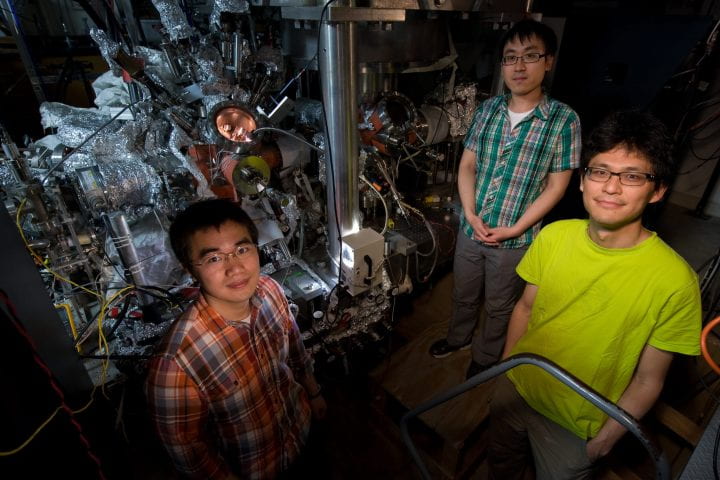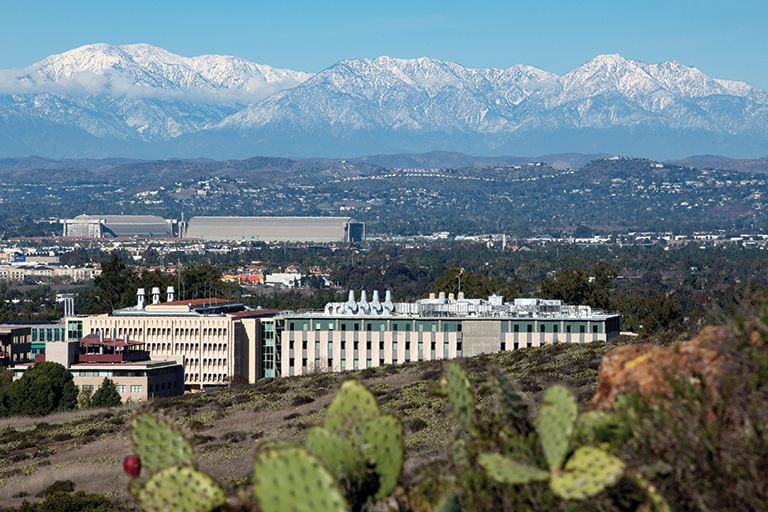Molecule unmasked
UCI research team pioneers imaging technique that clearly reveals structure, individual chemical bonds

“Shocking!!!!!!!!!!!!!!”
Overjoyed researcher Chi-lun Chiang of UC Irvine physicist Wilson Ho’s group penned that inscription, complete with 14 exclamation points, in a laboratory notebook at 10:35 p.m. last July 17. He and another doctoral student in the group had rushed from their dorm rooms after seeing an image of the structure of a single molecule appear on their computer screens. They raced to the experiment site in the basement of Reines Hall and confirmed their success.
Using a two-story scanning tunneling microscope and a tiny carbon monoxide needle dubbed the “itProbe” (both hand-built on the premises), they’d been able for the first time to clearly reveal the individual chemical bonds in a single molecule by bringing into focus features that are a million times smaller than the width of a human hair.
Their results have now been published in the prestigious journal Science, testament to the breakthrough work. For decades, chemists have used ball-and-stick models to represent what they thought the structures of molecules would look like. But the UC Irvine group could see with incredible detail what others had only imagined – the polygons forming a four-petal cobalt phthalocyanine molecule.
Or, to put it in their terms, “we show that the energy, intensity, and line shape of the carbon monoxide vibration are sensitive to the skeletal structure in the molecule: 57 atoms, 68 bonds, and 4 lone pairs and its surrounding. The CO vibration senses the skeletal structure differently than elsewhere, and is detected by inelastic electron tunneling spectroscopy with the scanning tunneling microscope.”
The researchers have replicated the results repeatedly and reduced the time to capture a single image from about six hours to one. They expect that the same technique will work with other types of molecules too, opening up vivid new views of molecular chemistry.
The Donald Bren Professor of Physics & Astronomy and Chemistry, Ho praises his young team’s perseverance and marvels at the outcome: “You work hard in the lab, and on rare occasions, Mother Nature reveals more details of herself than you asked for. This paper describes such an experiment, where results came out beyond our expectations, more beautiful and clear than we had hoped for. It is also exhilarating to be able to validate an important concept about the structure of chemical bonding that has been postulated for decades in the literature.”
As for being published in one of the world’s leading academic journals, Chiang, lead author of the study, says, “We’re excited. We had this idea that it would work, but then it didn’t for a long time.”
“We had just about given up, right?” he says to Ho. “When it did work, it was truly shocking.”
Co-authors are Ho, Chen Xu and Zhumin Han.
